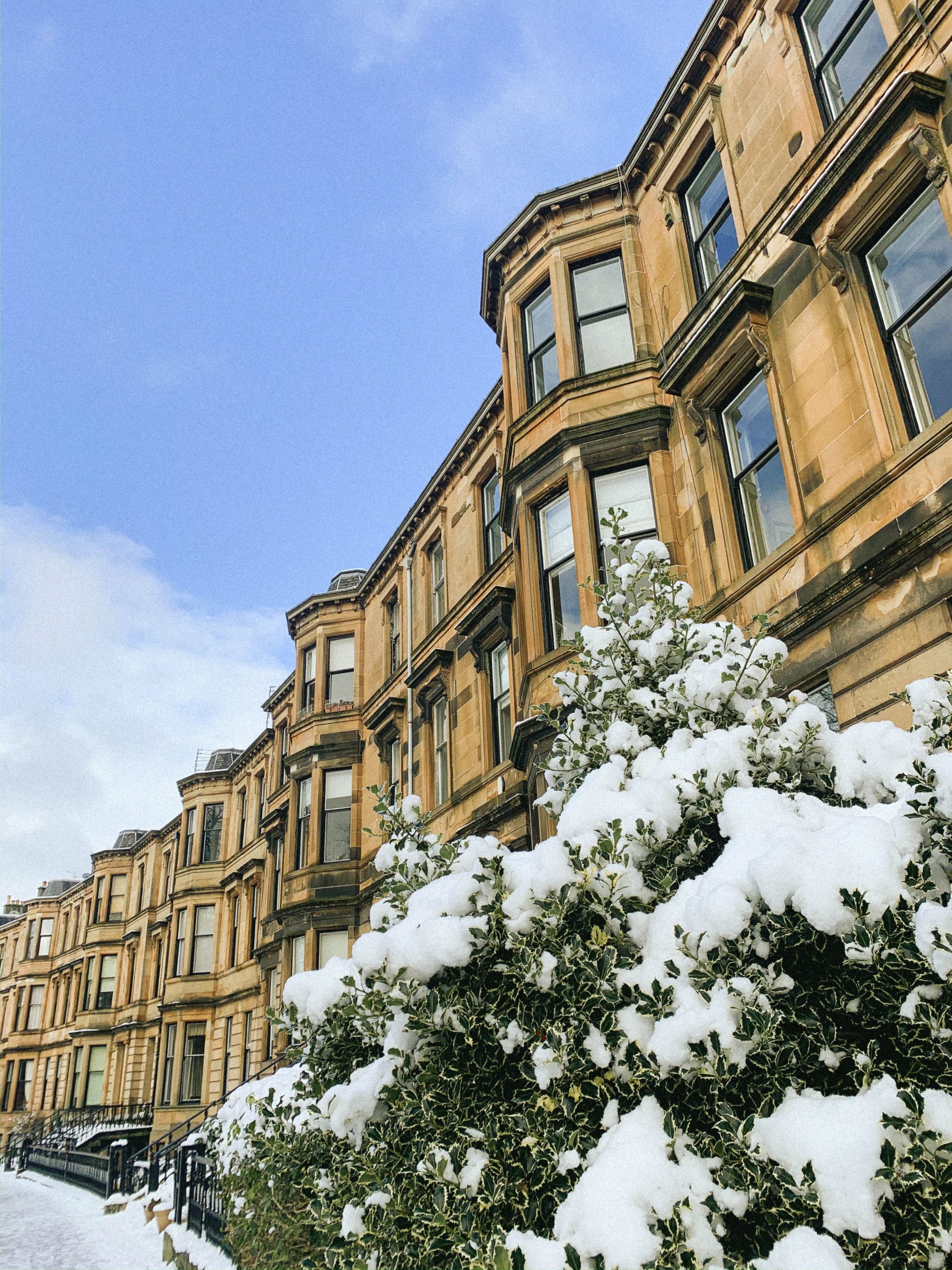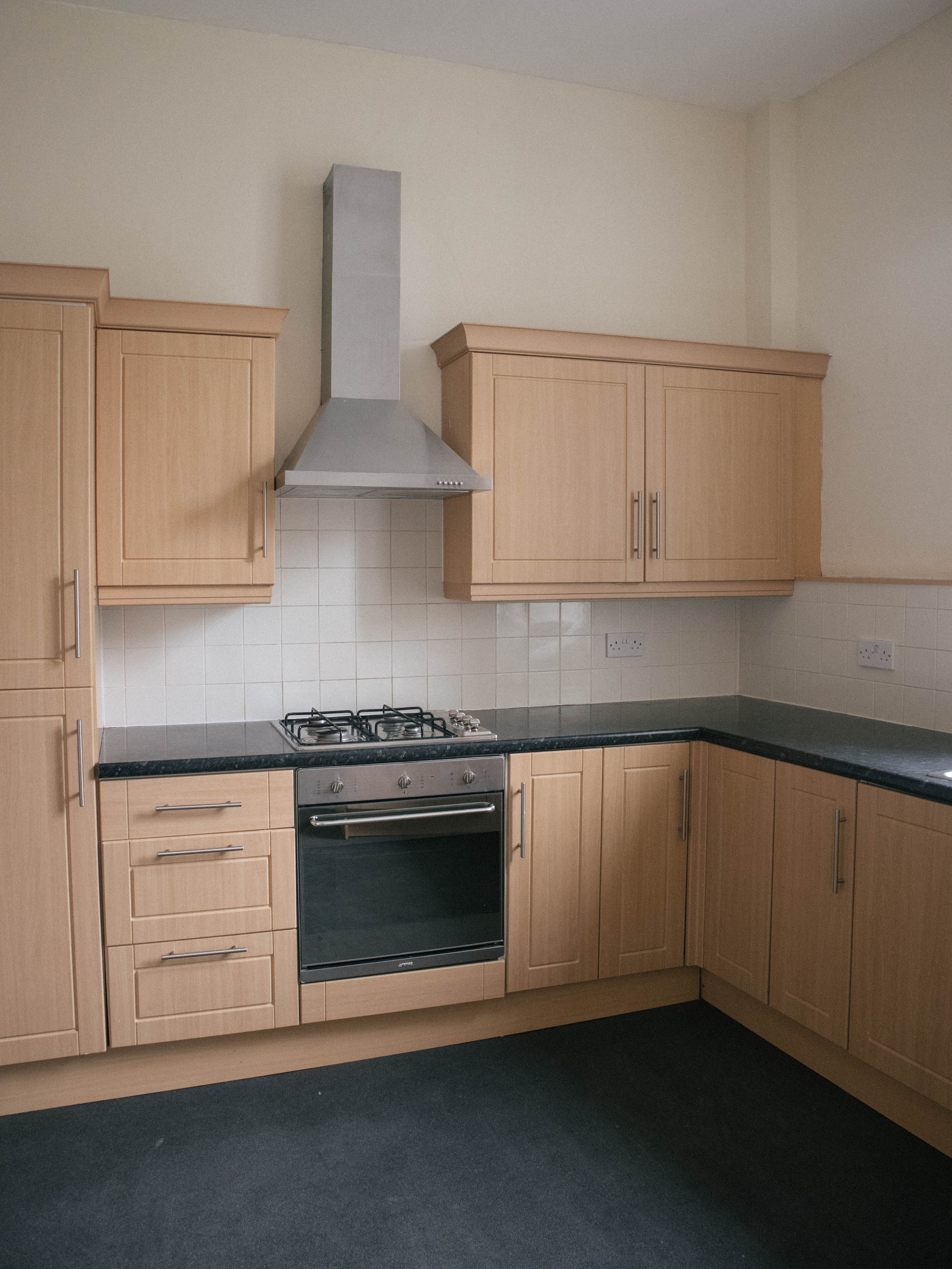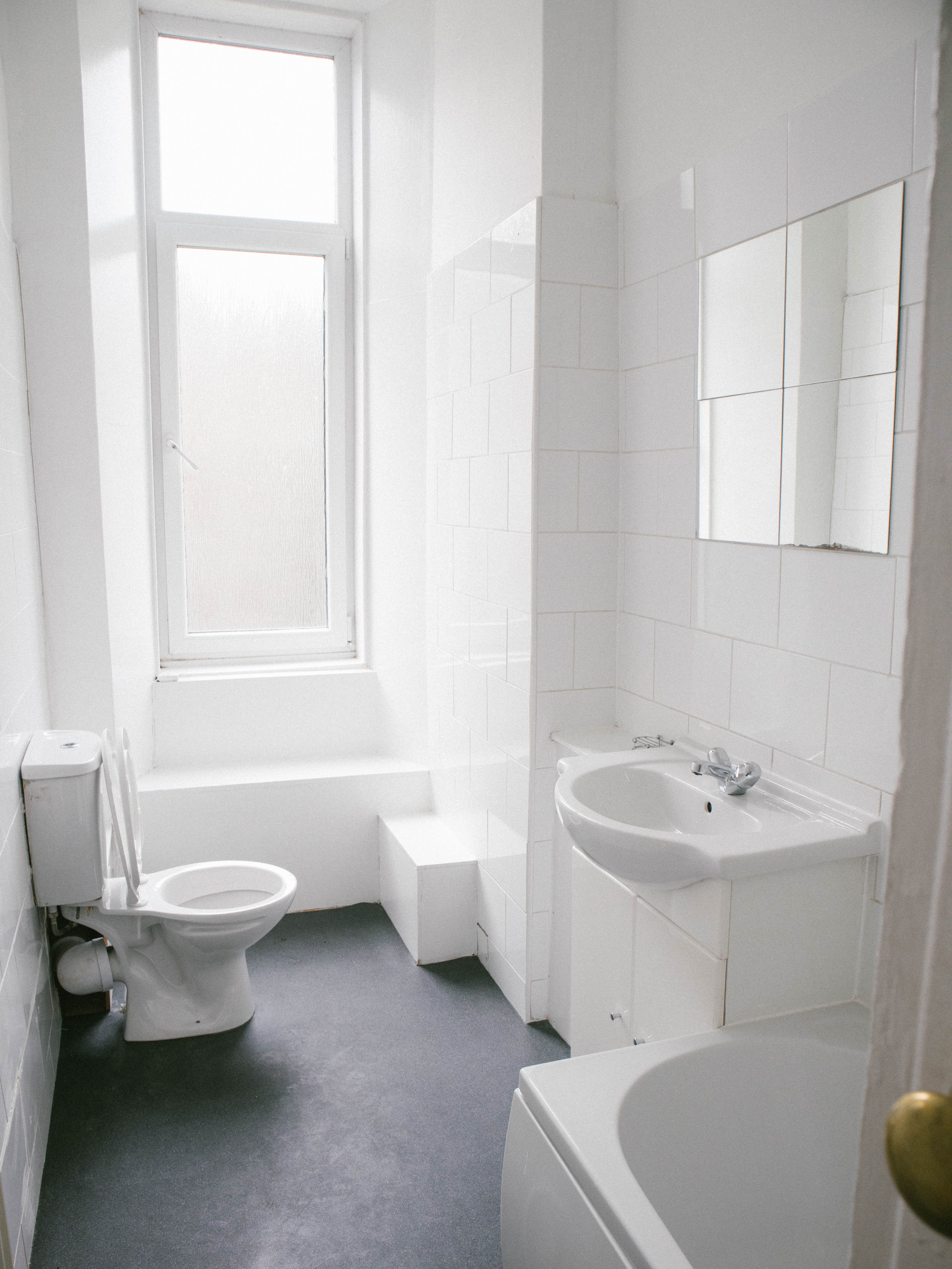



Everything I know about buying a tenement…
If you’ve followed me for more than say, five minutes, you’ll know I am incredibly passionate about the tenement buildings of Scotland – specifically Glasgow, where I live. If you’re not familiar with a tenement, they’re a type of Victorian and sometimes Georgian apartment block which are commonplace in cities in Scotland.
They’re recognisable by their high ceilings, original details such as ornate cornicing, fireplaces, wooden floors and recesses off the living room and kitchens.
With the majority of these buildings being built in the 1800s, they need a lot of love and care (and cash!) to allow them to flourish, but if you’re willing to do the work (and part with the ££!), they really are wonderful homes and offer so much potential.
I always say I can see myself living in a tenement for the rest of my life – our current three bed flat is around 110m2, so we have a great amount of space and we LOVE our area.
I guess one day we’ll move to a house but I just know it’ll be in keeping with the Victorian era, I love the period details so much!
I have bought and renovated two tenement flats, and also helped two of my brothers purchase their tenement flats too so I know a thing or two about what to look for by now! I actually haven’t viewed too many and only lost out on one, because I do the bulk of the work beforehand – lots of researching of area, criteria etc.
I have been promising a guide for some time now, so I finally gathered up all the knowledge I have and put together a ‘how to’ on viewing, planning and purchasing a property!
Most of this information is based on my experience in Glasgow but it can apply to other cities, as well as villas and other Victorian/Georgian buildings. It’s my own personal findings and you may find some of this doesn’t apply or you feel differently, but anyone who has purchased a property before will know how exhausting and overwhelming it can be so I hope this gives you some guidance.
What To Know First
Tenements are well sought after flats, especially in locations like the Southside and West End. They are beautiful buildings with a ton of potential and they will sell within a day (genuinely!), so you need to have your ducks in a row to avoid disappointment.
I’m not going to talk about location too much here because Glasgow changes quickly – what I will say is that there are lots of ‘up and coming’ areas if you’re willing to have faith and hang tight. Anywhere within a 20-30minute walking distance to a busy area like Strathbungo, Byres Road or Shawlands is well worth it in my experience, as areas expand and new coffee shops and businesses move out of these more populated neighbourhoods and venture in to new territories.
I always say check Rightmove and Zoopla every day; set up a saved search for the location and other criteria you’re looking for and be available to view any favourites straight away. It’s also worthwhile having a solicitor or mortgage adviser on hand because it’s a good idea to note interest or even make an offer as soon as possible.
Remember, there is a lot you can change with tenements so have an open mind! Both times we bought our flats we viewed them once and made an offer within hours (and didn’t see them again until we got the keys!), and they weren’t exactly pretty – but I knew they had potential!
The price of a tenement flat varies from area to area, but they almost always increase in value (I’ve never heard of a tenement flat not going up in value!) so they are a great investment. Pick an area that looks like it might flourish in time and you should reap the benefits when it’s time to sell, providing you’ve looked after it well.
Go armed with a list of what you want, what you’re willing to compromise on and what you really won’t give up. I usually narrow these down from the pictures and floorplan on the listing first – I will study every angle of the pictures, google the address, assess the floorplan and read the home report before I view a place so I’m not wasting my time, but I do think you can be surprised by seeing a place in the flesh so keep this in mind.
Making An Offer
I would do a lot of research independently before you view – look in to the home report value, talk to your solicitor, look at how much other homes in the area have sold for, weigh up if you think it’s worth paying over the home report value. Your solicitor will usually recommend what to pay, and will let you know if you’re going too far over the home report value. For reference, we paid almost 10k over the home report value but I knew it was worth it – and I also found out that the flat upstairs with the same floorplan sold a week later for 20k more than we’d paid so we got very lucky!
Personally, if a flat has gone to closing date we’ve just cut our losses and moved on. We actually have only lost out on one flat and in the end, the second one we offered on (and got) was a million times better. I tend to go for flats that are “shells” though, since I know I’ll want to change everything so we’ve never had too much competition!
Make A List Of What’s Important To You
There are things I just will not budge on when it comes to a tenement property – this may differ for you and that is a-okay! Not everyone has the same priorities, but mine have remained the same since we bought our first flat almost 8 years ago – and even when we were renting in the year or two before that. I just know what I want when it comes to a property now so I’ve actually viewed very few properties in my time – I can typically tell from the images online and the home report.
Most of my tick-list isn’t to do with aesthetics because I know I can change all that, but rather the more complicated, structural or expensive things I’d just rather not do myself.
It’s worth mentioning both my husband and I aren’t very handy (and very busy) and would always prefer to get a tradesman in to do most jobs, so you may feel differently if you’re open to doing a lot of work yourself.
Some of my criteria includes;
– must have a window in the bathroom
– must have a full kitchen with window (no kitchen in the recess or converted open plan living area)
– must already have central heating (you can of course install this, but if you don’t have to then I’d aim to avoid it!)
– must already have double-glazing (as above)
– no ground floor flats (higher risk of break-ins/people are nosy/they tend to be colder)
– ideally have floorboards (not essential but something I look for)
– original details as much as possible (some people put in fake ceilings, remove the cornicing and ceiling roses etc. – I despair)



What To Look Out For
The home report will give you a good idea of what’s what with the property, in terms of any issues with the roof or leaks etc.
In my experience, these buildings are old and yes you’re going to run in to issues but they’re typically manageable. I can’t think of anything that would really worry me with a property, although I do recommend having a look out in the back garden/bin area to gauge what type of neighbours you’re inheriting. I’ve had friends that have really struggled with their neighbours (dumping rubbish in the garden/bringing in bed bugs/generally being terrible) but a quick nosy at how they keep their front door and garden should give you an idea of what you’re getting yourself in for!
We’ve never had a huge issue with damp or mould – only when the gutters were leaking and the water was coming through, but it eventually was repaired. We’ve also always had flats with a window in the bathroom which I think helps.
In winter, condensation will build up on the inside of the windows but we’ve always just given them a wipe – although maybe a dehumidifier would be better if you’re really struggling.
Noise Issues & Neighbourhoods
Some tenements flats are not very well sound-proofed, we lived on the top floor previously and we noticed really quickly when we moved to a second floor flat just how noisy people can be upstairs – although it’s totally bearable and we got used to it within a week! I think our flats are quite soundproofed (we rarely hear anything through the walls, but occasionally hear the people upstairs working out or dropping things, but only if it’s directly above our heads and not somewhere else in the flat).
I’ve had friends who have really struggled with noisy upstairs neighbours so perhaps listen out for this if you’re viewing a flat.
Of course, many tenements are in lively neighbourhoods, on main roads or near pubs so it can be super noisy – especially in summer when you want the windows open. Again, when we moved floors, we really noticed the difference as we were closer to the street – the traffic kept us awake, people would have parties… it took a while for us to get used to it but now it’s just a part of our life.
Sometimes someone will have a party or a wild night in, but it sort of comes with the territory. My advice would be to be friendly with your neighbours so they keep you in mind when they’re throwing a rager!
Things You Can Change
Tenements are tricky because there’s not a lot you can do structurally as most of the walls are supporting and would require a structural engineer and planning permission to alter. I have seen people move walls in tenement flats, usually to take a one bedroom flat and turn it in to a two bed at the sacrifice of the kitchen, but this is a big no from me.
Even without altering the layout, there is a lot you can change with tenements – we even managed to work around our typical tiny galley bathroom and put in a wetroom shower and a bath (my proudest achievement to date) but you do need to use your imagination!
When we renovated our current flat, we stripped out the whole thing – kitchen, bathroom, flooring, and started again. Of course, a big project but if you’re willing to put in the work you can easily find a fixer-upper for a good price and really make it your own.
There’s also lots you can do slowly, altering bits as you go. Things like stripping wallpaper, replacing taps, small tiling jobs, painting, filling in cracks, adding panelling, sanding floorboards etc. you can definitely do yourself, so if you’re hoping to save some money, get your DIY on!
Tenement walls are notoriously bad, often covered over with lining paper (a type of thick wallpaper capable of holding together crumbling walls in lieu of properly plastering them) that will need to be removed and the walls repaired and replastered. This is basically a given, so always set aside some money to get the walls repaired. Our first flat had terrible cracks in some of the walls but we had the lining paper stripped in every room and the walls replastered and they were fine from then on, bar the odd hairline crack that shows up when the building warms up in summer. There are some cracks you can fill and sand and fill and sand, but they will keep coming back – especially if you’re on a busy road. Sometimes you just have to give in, but sometimes they can be repaired!
Plasterers often won’t know the condition of the walls until they start removing the lining paper, so they’re usually hesitant to give you a quote straight away but it can be well over a grand to fully plaster a two-bed tenement so keep this in mind.
In our first flat, we did this slowly room by room when we had the money which was a bit of a nightmare, but it’s absolutely worth it once it’s done!
If you’re lucky enough to have a shared garden, these costs are usually split between the flats. We haven’t done much to ours, but we did mention maybe chipping in and getting some work done to it. This is when it pays to be friendly with your neighbours, a little kindness and community spirit can go a long way!




Features That Are Harder To Change
As I said, anything structural is pretty much a no-go unless you’re really committed.
In terms of other renovations, make sure to get a few different quotes from various tradesmen because a lot of them will straight up say no to things (like us having a wetroom shower/moving plumbing/installing a gas hob) when someone else will say yes, no problem.
In my experience, tradesmen are notoriously difficult in general. I’m not sure if this is a Glasgow issue, but you do have to be firm with them and stick to your guns. I’ll likely cover this in another post, but make up mood boards, provide them with lots of visual references and don’t back down if they say no – most things are possible!
I would personally say double glazing and central heating are essential, so if you’re buying a property without either of these then factor in the cost of fitting them because you’re going to need them. We did actually swap out every radiator in our flat for column radiators with new valves, piping and get a new boiler which was quite expensive but so worth it!
Other Costs Involved
Owning a tenement will often come with added costs, like all buildings I assume. They need a lot of care and not everyone will be on board with this.
Typically, each homeowner in a tenement block will share a “close” (a common stairway) and they each have a responsibility to care for the building. This is usually done through a factor company; you pay the factor an amount (often quarterly) that covers the cleaning costs of the communal close, building insurance and any upgrades done to the building itself. For example, if you had a leak in your ceiling or the lock on the main close door was broken, you would arrange for your factor to fix this and then it would be divided amongst the properties and you each pay a share.
I believe our factor invoice for a quarter (per flat) looks like this:
Management fee: £30
Cleaning fee: £10
Building insurance: £120
And then we’ll usually have some other fee on top of that, like a lock repair, gutter or roof repairs… it’s usually about £150 a quarter. An essential cost, and one that can vary between properties so keep this in mind and possibly ask when you view the flat if you can.
In the time we’ve owned both of our flats, we’ve had to deal with a fair few issues! In the past, our top floor flat was leaking water through the windows at the front of the building every time it rained. It took us months and months of phoning the factor to arrange for a cherry-picker to come and clear the gutters – it involved our busy street being closed off so the work could be done, and it wasn’t cheap either.
We’re also in the middle of a long battle to get the sandstone on our flat repaired, it’s been in a bad way for a while (as a result of the gutter issues) but we’re finally making progress with it. It’s costing over £2500 per flat but it does need to be done, and thankfully we can pay in instalments.
We also had a quote come through to replaster our close which came to £11,000 in total (to be divided amongst the properties). Everyone ignored it.
It can be tricky to get your neighbours on board with repairs, but in the case of the sandstone repair, the majority of us agreed and the council are paying on behalf of the other owners and will reclaim the funds at a later date.
Having a company as your factor can be tricky, you often have to hound them to get even the smallest jobs done – but they do tend to get things repaired, and it’s a weight off your shoulders!
Hopefully in future there will be grants available to help owners repair these beautiful buildings, because they’re at risk of becoming rundown and having to be demolished. The very thought breaks my heart!
A Bit Of A Budget Breakdown
When we renovated our current flat, I kept a budget of everything we spent. Of course, this will vary massively depending on a lot of factors. I had renovated a tenement flat before so I had an understanding of costs, I would say we spent around £20+k on the actual renovations overall (including full appliances, rewiring, a new boiler, plastering, flooring in every single room, all new radiators etc.) and then a bit more on added bits like furniture, lighting, furnishings etc. – this was spread over about a year and a bit though, and some things ended up being way more due to the pandemic.
I don’t think you need to have £20,000 saved for renovations, we definitely did not have this when we bought our first flat! In fact, I always say it’s a good idea to live in a property first to get an idea of what to change etc. – but some savings are wise, especially for paint, plastering if you need it done, that sort of thing.
I’ll try and share a more detailed breakdown at some point but here are some estimated costs of renovations which include labour costs…
Full bathroom renovation: around £5000 if you keep costs of tiles, fixtures etc. down
Kitchen renovation: around £7000 if you’re doing it cheap (eg. IKEA kitchen or just painting fronts)
Plastering: roughly £400 per room
Built-in wardrobe/shelving: £800-£1000
Full wooden floorboards throughout a 3 bed flat: £5000
It’s really hard to pin down costs because tradesmen will vary a lot, and you can also save a lot by shopping around for white goods, tiles etc., and doing a fair chunk yourself (we did almost nothing ourselves, bar some painting!) so use this as a guide.
Some Advice On Making Them Warm
The age of the buildings, combined with a lack of insulation, large rooms and the high ceilings mean that tenement flats can be expensive to heat. We have a Nest thermostat that helps to keep our home at a good temperature, so we’re not letting the flat get freezing and then have to heat it up all over again. Ours is a large flat so it can be expensive to heat, but a thermostat, some draught excluders and a smart meter will keep you on track!
Our flat isn’t too bad in terms of heating, and I’m a cold person! If it’s really bad in winter, I usually just live in comfy clothes. There’s no way round it really – although double glazing definitely helps.
A Few FAQs
Any info on water pressure?
Some flats have a water tank in the loft that means the pressure is better, but only for hot water. We’re currently on the second floor and have great water pressure but it varies from flat to flat. I’m not sure if there’s really much you can do about it, but it’s worth raising it with a plumber if you’re really struggling.
Is it tricky getting furniture in?
We have never had an issue with this – tenement close stairwells are wide (although can be a little awkward), as are doorways! A godsend!
Can you change factor companies?
I believe you can, I know some people don’t even have factors to begin with and just self-factor. It’s something you’ll need to discuss with the other residents of your block.
A Final Note
I understand that the tenement life isn’t for everyone, they do come with a bit of baggage but they are truly beautiful buildings that deserve to be restored and loved. With a good eye, a lot of faith and patience, you’ll end up with a home that will bring you so much joy – and no doubt increase in value as the years go by!
I adore my tenement, I believe they’re absolutely worth the hassle and there’s never been a time where we’ve thought about getting a new build! My experience overall has been great – just embrace the quirks, the wonky walls, the slanted floors and the tiny bathrooms!
Hopefully this will help you in your flat-hunting efforts, I wish you lots of luck with it.
















